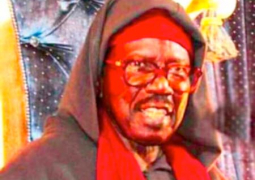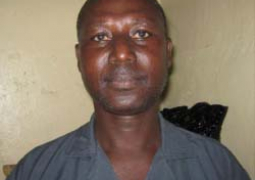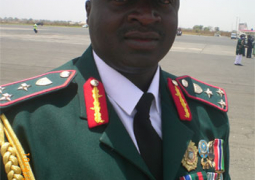The offence stated that the convict, Awa Sanyang, on 30 September 2012 at Brusubi Phase One in the West Coast Region, murdered one Isatou Bojang, by hitting her with a stick and placing a hot electrical iron on her face and other parts of her body.
Delivering the judgment, Justice Emmanuel Nkea stated that challenged by the plea of the convicted person, the prosecution led evidence through seven witnesses and tendered exhibits in support of their case, while the accused person led evidence as the sole witness in her defence.
Both sides waived their right to address the court, he said.
The judge added that the prosecution case was that on 30 September 2012, at about 3 am, the convicted person applied a hot electrical pressing iron on the face and body of the deceased person, Isatou Bojang, leaving her dead on the floor of the convict’s room.
He said the convict in her initial cautionary statement to the police alleged that the deceased was murdered by her boyfriend, and a regular visitor called Hamed.
In the second cautionary statement she made to the police later the same day, the convict made a confession, admitting that she was the very person that killed the deceased, but added that her mouth was never plastered and her hands were never tied, said the judge.
The convict, in her defence testimony, maintained that the deceased was murdered by Hamed, and that the confessional statement was extracted after tortured by the police, Justice Nkea stated.
He added that upon the totality of the evidence adduced there was no doubt whatsoever that the deceased died.
The presiding judge added that the death certificate and the autopsy report, as well as the evidence of the convict herself each corroborated this fact in a conclusive way, and since every homicide was presumed to be unlawful unless it was excusable, and there being such compelling evidence that the deceased died a brutal death.
“Without any corresponding evidence to justify the homicide, I find as a fact, therefore, that Isatou Bojang died on 30 September 2012, and also that the cause of the death was unlawful and, in doing so, I hold that the prosecution had proved these two ingredients beyond all reasonable doubt,” Justice Nkea stated.
He further indicated that on the issue of malice afterthought, the law was so clear and the law was that to determine whether or not there was malice afterthought, the court should look at the type of weapon used, the nature of the injuries inflicted, the parts of the body affected, the manner in which the weapon was used, and the conduct of the convict before the court.
The trial judge added that the fourth ingredient in the charge of murder which the prosecution must prove beyond all reasonable doubt was the participation of the convict in the death of the deceased person.
He said this was the only ingredient which was contested by the defence, adding that from the onset, the convict raised the allegation that the deceased was murdered by one Hamed.
She stated so in her initial police statement and in her additional statement, and repeatedly said so before the court, according to the judge, noting that this was the sole defence of the convict.
He stated that there was also the unchallenged evidence of CW1and CW2 that as the tenants and neighbours, they have never seen or heard about the man called Hamed.
Justice Nkea further stated that when he put the above pieces of evidence together, he found as a fact that the entire evidence of the convict was loaded with lies, and she was an unreliable witness whose evidence could not be relied upon by the court.
“I did not believe in the existence of Hamed at all. I hold that Hamed is a fiction of the convict’s imagination raised with the sole purpose of shielding herself from the wrath of the law. Her entire evidence was unreliable and unbelievable,” said the judge in his judgment.
He adduced that it was equally settled law that a free and voluntary confession of guilt by a person, if it was duly made and satisfactorily proved, was sufficient to warrant a conviction without any corroborative evidence, as long as the court was satisfied of the truth of the confession.
The autopsy report that was issued by the government pathologist was prepared outside the confession, and it stated clearly that the body presented was with severe burns of skins of the face and upper left side of the chest wall, he said.
“My understanding of the above pieces of evidence is that the injuries on the face of the deceased were caused by hot pressing iron applied on her by the convict, and with regard to the injury inflicted on the deceased, and this I shall hold as a fact and exhibit K, is outside evidence that the confession is true, but also that it is corroborated and this I shall hold as a fact,” he added.
The convict raised the issue of provocation and self-defence in exhibit C, in which she alleged that it was the deceased that slapped her first and she only retaliated by using a hot pressing iron on the body of another person in response to a slap, which was in far in excess and could not constitute an act in self-defence.
“I cannot also accept that mere insults on the victim by the deceased, a person who stood as mother to the convict, would constitute provocation to warrant such a violent reaction from the convict,” he said.
He arrived at the conclusion that he found as a fact that it was the convict who murdered the deceased, and that she did so without being provoked and her actions were not in self-defence.
“I accordingly hold that the prosecution had proved its case with the certainty required by law against the convicted person, and I found the convict, Awa Sanyang, guilty as charged”.
Read Other Articles In Article (Archive)
African Journalists concerned over safety and security
May 4, 2011, 1:34 PM




